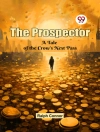In ‘The Green Dwarf, ‘ Charlotte Brontë explores the complexities of human relationships through a rich tapestry of fantasy and psychological depth. The narrative unfolds in a vividly imagined world where elements of the gothic mingle with sharp social commentary, revealing Brontë’s skill in weaving intricate character arcs against an evocative backdrop. The story addresses themes of love, jealousy, and the supernatural, showcasing Brontë’s ability to challenge societal norms while employing a lyrical prose style that reflects her command of the English language and her influence by the Romantic tradition. Charlotte Brontë, an influential figure of the Victorian literary canon, is known for her profound understanding of the human psyche and her exceptional narrative voice. Raised in the Yorkshire moors, her experiences of isolation and familial struggles undoubtedly shaped her literary endeavors. ‘The Green Dwarf, ‘ believed to be written during her youth at a time of intense personal and artistic exploration, captures her burgeoning talent and preoccupations, providing insight into her evolving perspectives on identity and social constraints. For readers seeking to immerse themselves in exquisite prose that combines fantastical elements with deep psychological insight, ‘The Green Dwarf’ is an essential addition to the literary canon. By engaging with this early work, one gains a broader understanding of Brontë’s development as an author and the thematic preoccupations that would later define her more mature works, making it a compelling read for both scholars and enthusiasts.
Circa l’autore
Charlotte Brontë (1816–1855) was an eminent English novelist and poet, who is best known for her novel ‘Jane Eyre’, hailed for its strong narrative and intricate character development. Born on April 21, 1816, in Thornton, Yorkshire, England, she was the third of six children and a member of a gifted literary family. Alongside her sisters Emily and Anne, Charlotte advanced the woman’s voice in the English literary canon, often publishing under the male pseudonym Currer, Ellis, and Acton Bell due to 19th-century gender biases. ‘
The Green Dwarf’, a lesser-known work penned by Brontë in 1833, showcases her early foray into writing, albeit it was published posthumously in 2003. This novella, written under the pseudonym Lord Charles Albert Florian Wellesley, also reflects Brontë’s proclivity for the use of first-person narratives and vividly painted, multi-dimensional characters, traits that would later be hallmarks of her mature literary style. The tale, set in a fictional fantastical realm, bears the gothic and romantic elements that are emblematic of her more famous works. Charlotte Brontë’s contribution to literature is significant not only for her unique stylistic approaches and portrayal of women’s inner lives but also for addressing social issues of her time through her storytelling. Despite her relatively short life, her works have left an indelible mark on British literature and continue to be celebrated for their emotional depth and realism.












